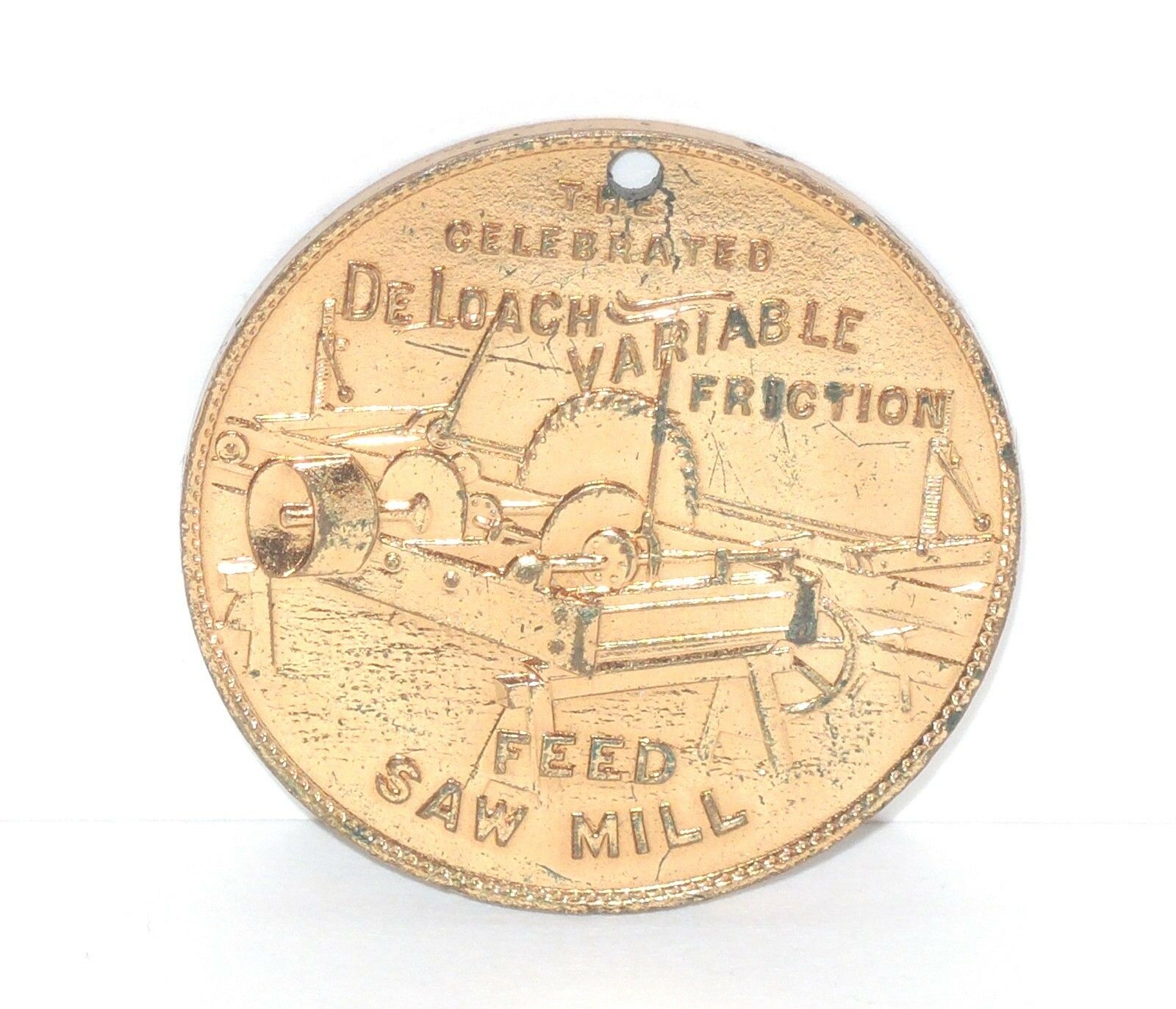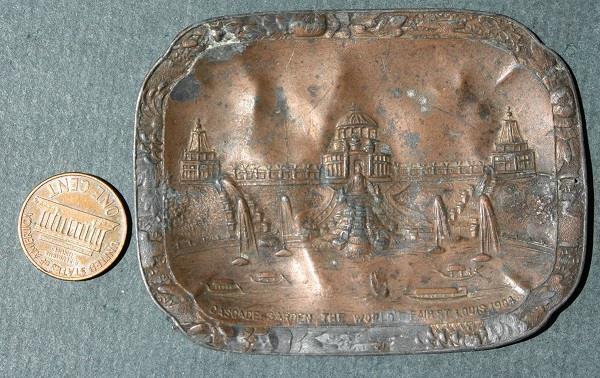-40%
RARE St Louis Louisiana Purchase Exposition 1904 DE LOACH SAW MILL COMPANY Token
$ 19
- Description
- Size Guide
Description
*****See my other auctions for more great related historic & collectible items!*****RARE St Louis Louisiana Purchase Exposition 1904 DE LOACH SAW MILL COMPANY Token
I AM CURRENTLY LISTING A RARE SOUVENIR LEATHER CHANGE PURSE THAT THIS TOKEN WAS FOUND INSIDE FROM THE 1904 ST. LOUIS WORLD'S FAIR
The Louisiana Purchase Exposition, informally known as the St. Louis World's Fair,
was an international exposition held in St. Louis, Missouri, United States, from April 30 to December 1, 1904. Local, state, and federal funds totaling million were used to finance the event. More than 60 countries and 43 of the 45 American states maintained exhibition spaces at the fair, which was attended by nearly 19.7 million people.
DeLoach Mill Manufacturing Co.
Atlanta, GA; South Bridgeport, AL; Chattanooga, TN, U.S.A.
Manufacturer Class:
Wood Working Machinery
William Henderson Deloach (December 13, 1829—November 14, 1914) was a Confederate Cavalry Officer, and also an inventor of milling equipment, holding two patents for milling. He operated the Deloach Mill Equipment Company in Atlanta Georgia early in the Century, and it was left to his sons.
In the 1870's, country miller William Henderson De Loach, of Kirby Springs, GA, invented a horse power that allowed him to thresh a farmer's grain on site, avoiding the need for the customer to bring the grain into town. He also developed a grist mill. When the equipment manufacturing business outstripped his milling business he and his sons moved to Atlanta and established W. H. De Loach & Sons; this was during or before 1875. The company seems to have incorporated in 1887 as De Loach Mill Manufacturing Co.
At some point they began to manufacture saw mills and related equipment. Alonzo Aaron De Loach (W. H.'s son) received an 1890 sawmill patent, so it is likely they were already making sawmills by that time.
After W. H. De Loach died in 1914, his sons relocated the business to South Bridgeport, Alabama, and by 1920 they were in Chattanooga, TN. Alonzo A. De Loach died in the fall of 1921 and it seems that the company ceased operations shortly afterwards.
Description:
Research shows that these mills famously were used to tame the Old West & make it useful for farming & building.
Recent fresh estate find, like a time capsule. This beautiful token found in a tan leather souvenir child's doll size change purse embossed with hand colored MACHINERY BUILDING for the LOUISIANA PURCHASE EXPOSITION of Saint Louis in 1904. Also in the purse was a locket of pretty silky clean blonde hair...probably from the little girl child that originally owned the purse. See other listings for the purse.
Front of token relief embossed with
"THE CELEBRATED DE LOACH VARIABLE FRICTION FEED SAW MILL".
Amazingly finely detailed large view of the saw mill across the whole front of the coin. Small hole drilled at top for dual use as a necklace pendant.
Reverse side stamped with company info:
"DE LOACH MILL MANUFACTURING COMPANY
MANUFACTURERS OF PATENT SAW MILLS'
PLANERS, SHINGLE MILLS,
GRINDING MILLS,
MAY PRESSES, ETC.
ATLANTA, SAINT LOUIS, NEW YORK USA"
THIS IS THE ONLY EXAMPLE LIKE IT ON THE ENTIRE INTERNET -- VERY RARE!!!
Measures 1.25" (inches) diameter & still retains most of the original shiny luster patina....never polished, all original. It appears to have been in the child's coin purse & never used since it was taken at the Machinery Hall in 1904!!! Very rare to find one at all, let alone in this amazing condition. Some very minor age wear only, still all original golden shiny. (see pics)
Please see photos & scans for exact condition and details.
FOR COMBINED SHIPPING ON MULTIPLE PURCHASES
- PLEASE ADD TO CART & "REQUEST TOTAL FROM SELLER".
Payment must be made within 3 days of purchase. Please see attached pics & make all inquiries prior to purchasing.
Historians generally emphasize the prominence of themes of race and empire, and the fair's long-lasting impact on intellectuals in the fields of history, art history, architecture and anthropology. From the point of view of the memory of the average person who attended the fair, it primarily promoted entertainment, consumer goods and popular culture.
In 1904, St. Louis was the fourth largest city in the United States, and was expanding rapidly.
The city had become the "Gateway to the American West." Chicago had recently hosted the giant Columbian Exposition, establishing itself as a location of international import. By hosting a fair St. Louis would maintain its pace with Chicago and make known its presence as an influential city. The fair marked the centennial of the signing of the Louisiana Purchase Agreement between France and the United States, a historic purchase by the United States of land from the Mississippi to the Rocky Mountains, and from Canada to the Gulf of Mexico. The exposition opened a year late, however, in order to accommodate foreign exhibitors and American states.
The buildings, designed to look imposing and permanent, were made to be temporary, with the exception of the Palace of Fine Arts.
This partially explains why very little steel was used in the construction of the buildings. Although it presented a fire hazard,
wood was the material of choice for the great exhibit palaces.
The use of wood made the application of staff, lightweight material molded onto the buildings, much easier to apply. Staff was versatile, and could be painted any color. The staff was painted an ivory color throughout the fair, dubbing the exposition the
"Ivory City"
.
















